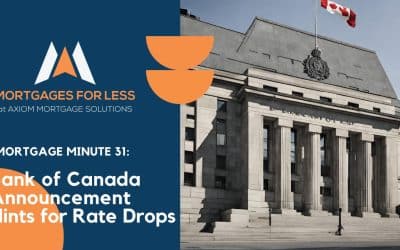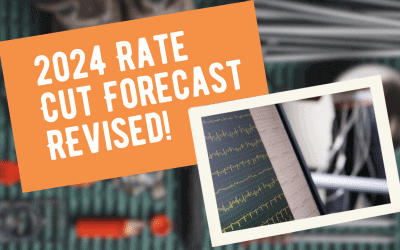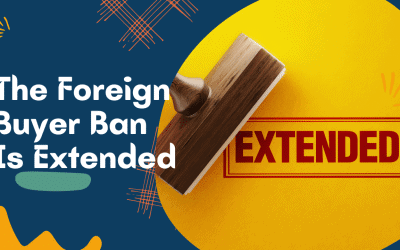For a long time not a lot of obvious benefit to choosing a variable mortgage rate because relatively the fixed rates were just as low!
Since 2008 when rates bottomed out as a result of the sub-prime mortgage bubble burst, we have not seen the bank of Canada rate more than 1.5% higher than it is today. That event triggered a $13 TRILLION reduction in US household net worth alone. The low bank rate we have today is the same low we saw in 2009. The estimated cost of COVID-19 in the US alone is $19 TRILLION.
And it took until 2018 – 10 years – for the bank rate to get that high.
Looking over the next 5 years – to compare taking a 5-year fixed-rate today to a new variable rate today – I don’t expect variable interest rates to increase more than 1.5%
At the end of October, the bank of Canada announced that they would stop buying bonds, which has caused FIXED rate mortgages to increase to about 2.5%, up from about 1.9% just over a month earlier.
Currently, we have some short term high inflation caused primarily by pandemic related supply bottlenecks, and higher energy prices. Not because of high employment, or an oversupply of money in our economy. Employment has yet to recover from where it was in 2019. Employment levels in Canada also never recovered to 2007 levels after the subprime mortgage collapse either. This is why I don’t expect to see rates rise significantly. As the supply struggles work themselves out, and our economy works to recover – along with the rest of the world – the fundamentals required for higher rates simply won’t be there in a meaningful way in the next 5 years.
The Bank suggests that they may increase rates starting sometime in the middle part of 2022. Assuming no further shocks that delay that – which is actually a pretty optimistic assumption.
Let’s assume that starts 9 months from now, and that we have a fairly steady increase in rates – totalling 1.5% over a 12 month period as our worst case scenario.
In this scenario, the savings by taking a variable rate are about $4500.
Now lets assume a recovery more like happened in 2010 after the sub prime mortgage collapse. There we saw a rapid ¾% rate increase over 3 months. And then no change for nearly 4 years after that.
In this scenario, the savings by taking a variable rate are nearly $14,000!
Here we really start to see the savings of a variable rate when compared to the fixed.
And for those who are uncertain about being in a variable rate long term, let’s quickly look at where fixed rates were most of the 8 years before COVID joined us. For most of that time, rates were right where they are now. Between 2.5% and 3%. So – take a variable rate for 6-18 months, and in a spring market, when fixed rates tend to drop, lock in then!
It makes sense. Of course, I am more than happy to review this with you.
Mortgages For Less
Axiom Mortgage Solutions
223 14 St NW, Calgary, AB T2N 1Z6
https://www.mortgagesforless.ca




0 Comments